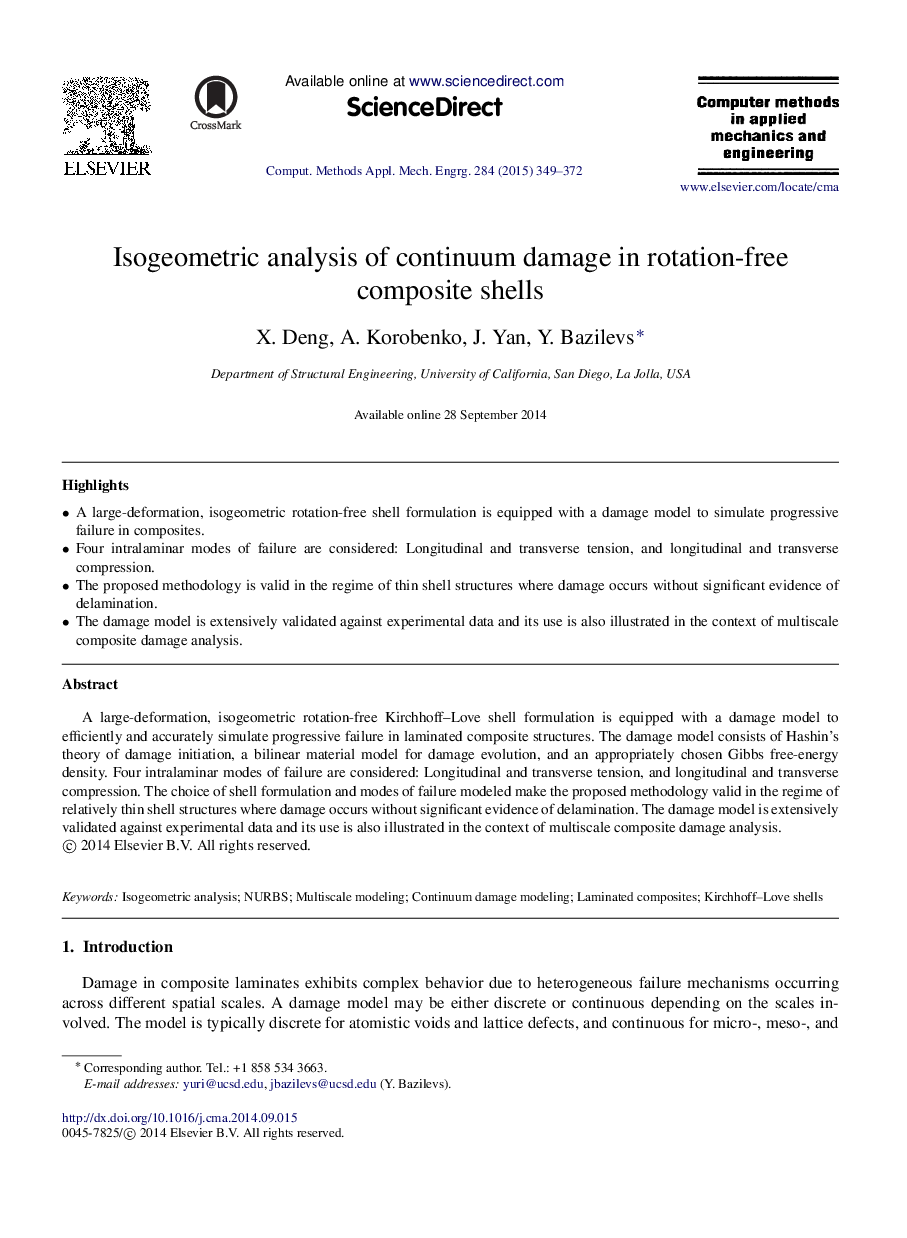| Article ID | Journal | Published Year | Pages | File Type |
|---|---|---|---|---|
| 497789 | Computer Methods in Applied Mechanics and Engineering | 2015 | 24 Pages |
•A large-deformation, isogeometric rotation-free shell formulation is equipped with a damage model to simulate progressive failure in composites.•Four intralaminar modes of failure are considered: Longitudinal and transverse tension, and longitudinal and transverse compression.•The proposed methodology is valid in the regime of thin shell structures where damage occurs without significant evidence of delamination.•The damage model is extensively validated against experimental data and its use is also illustrated in the context of multiscale composite damage analysis.
A large-deformation, isogeometric rotation-free Kirchhoff–Love shell formulation is equipped with a damage model to efficiently and accurately simulate progressive failure in laminated composite structures. The damage model consists of Hashin’s theory of damage initiation, a bilinear material model for damage evolution, and an appropriately chosen Gibbs free-energy density. Four intralaminar modes of failure are considered: Longitudinal and transverse tension, and longitudinal and transverse compression. The choice of shell formulation and modes of failure modeled make the proposed methodology valid in the regime of relatively thin shell structures where damage occurs without significant evidence of delamination. The damage model is extensively validated against experimental data and its use is also illustrated in the context of multiscale composite damage analysis.
